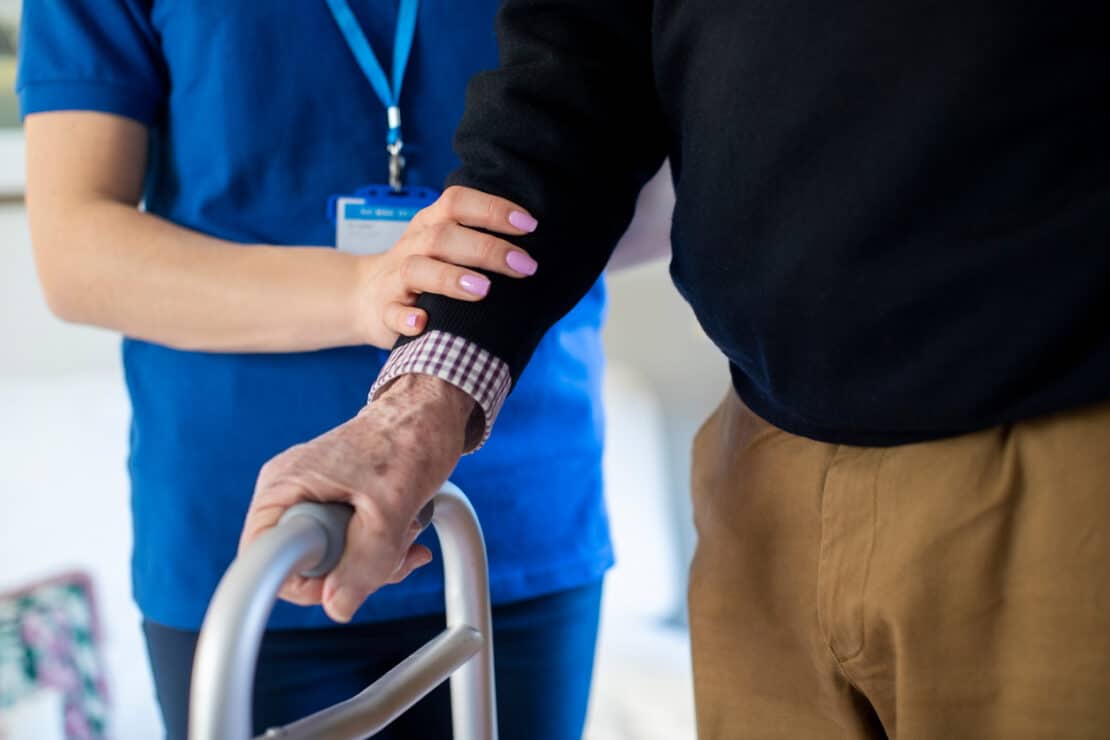You see warnings about osteoporosis everywhere. There are ads on TV and in magazines for bone medications.
If you’re a middle-aged or senior woman, your doctor has probably talked to you about osteoporosis prevention.
But there’s another disease of aging that is just as debilitating and even more common. And it’s as prevalent in men as it is in women.
The reason you don’t hear about it is because drug companies don’t have any products to treat it. They can’t make money from it. So, unlike osteoporosis, there are no advertising campaigns.
And doctors don’t mention it, either…since they have no pills, surgeries, or medical devices for it.
Without a profit motive, the medical industry largely ignores this condition. But that doesn’t make it any less devastating.
Sarcopenia is loss of muscle mass in otherwise healthy people. It strikes about 10% of people over 65. But it accelerates quickly after that. By age 80, about half of seniors have sarcopenia. In comparison, about a quarter of 80-year-olds have osteoporosis.[1] [2]
Is This Hidden Condition Robbing Your Strength?
Sarcopenia was first described as a health condition in 1989. It is diagnosed when a person has low muscle mass and either low gait speed (they are unable to walk at normal pace) or they have low muscle strength as measured in a grip strength test.
The condition can make it difficult for seniors to live independently. At first, simple tasks such as opening a jar or sliding open a window become difficult. As sarcopenia progresses, a patient has difficulty using stairs, getting up from chairs, or getting in and out of cars.[3]
What Causes Sarcopenia?
Getting older is the biggest risk factor for sarcopenia. But that’s a simplification. There are several factors that cause the condition. Researchers says they work in combination to deplete our muscles.
The muscle mass in most people peaks around age 30.[4]
After that, nerve cell signaling becomes weaker, leading to muscle atrophy. We produce less of the hormones that keep us strong, including growth hormone, testosterone, and insulin-like growth factor. And our metabolism changes so that we can no longer turn protein into muscle as efficiently.[5]
As people get older, they often tend to be less active. If you’re physically inactive, you lose as much as 5% of your muscle mass each decade after age 30. And the loss accelerates after you hit 65.
4 Ways to Stay Strong and Prevent Sarcopenia
There are no FDA-approved drug treatments for sarcopenia. Testosterone and other hormone supplements have been tested to treat it, but the results have been inconclusive.
Here are four natural strategies to stop sarcopenia:
- Eat 30 grams of protein per meal. As you get older, you need more protein to maintain muscle mass. Up your protein with plenty of organic meats, wild-caught fish, pastured eggs, raw nuts, and seeds.
- Take this under-the-radar supplement. Leucine is an amino acid crucial to muscle growth. In one study, people taking leucine while on a strength-training program increased their lean mass by 7.5% more than those who didn’t take the supplement. Leucine is widely available at health food stores and online. Take 400 mgs following exercise.[6]
- Do strength training three times a week. Your workouts don’t have to be long—20-30 minutes is fine. But they should be intense. Be sure to vary the exercises you do. Work your arms one day, your legs another, and your core on the third day.
- Check your vitamin D. Adequate vitamin D helps with muscle protein synthesis and fights inflammation. Both translate into more muscle strength. Have your doctor check your vitamin D level. If your reading is less than 20 ng/mL, you need to bring it up.
You can do this by increasing your sun exposure and eating more vitamin D-rich foods. Good sources include organic mushrooms, pastured eggs, and oily fish like wild-caught salmon, herring, mackerel, and sardines.
If your levels are still too low (ideal levels are 40-60 ng/mL), take a quality vitamin D3 supplement. This is the active form and is superior to D2. We recommend 5,000 IUs a day.[7]
Sarcopenia may not be as well known as other diseases of aging, but it is a condition that every senior should be aware of—and try to prevent.
Editor’s Note: Discover other natural, non-drug methods to transform your health. Read our monthly journal, Independent Healing. It’s your best source for unbiased, evidence-based medical information. For more information, click HERE.
Related Articles
The Obscure Nutrient That Slows Brain Aging
Get the Anti-Aging Benefits of Calorie Restriction Without the Hunger
The Surprising Factor That Drives Longevity
References:
[1] https://www.ncbi.nlm.nih.gov/pmc/articles/PMC4248415/
[2] https://www.cdc.gov/nchs/data/hestat/osteoporsis/osteoporosis2005_2010.htm
[3] https://www.ncbi.nlm.nih.gov/pmc/articles/PMC2886201/
[4] https://michaelcocchiola.com/2013/08/08/muscle-mass-peaks-at-age-30/
[5] http://www.webmd.com/healthy-aging/guide/sarcopenia-with-aging#1
[6] http://www.myprotein.com/thezone/supplements/science-leucine-amino-acid-promote-muscle-growth/
[7] http://www.eatingwell.com/article/275991/how-to-eat-and-exercise-to-prevent-age-related-muscle-loss-from-sarcopenia/

